I have three timestamped measurement series, taken over the same interval, but with different actual timestamps. I'd like to show these three trajectories in a combined plot, but because the x-axis (timestamps) is different in each case, I'm having some trouble. Is there a way to do this without picking an x-axis to use and interpolating the y-values for the other two measurement series? I'm fairly new to R, but I feel like there's something obvious I'm overlooking.
For example:
Series 1
Time Value
1.023 5.786
2.564 10.675
3.678 14.678
5.023 17.456
Series 2
0.787 1.765
1.567 3.456
3.011 5.879
4.598 7.768
Series 3
1.208 3.780
2.478 6.890
3.823 9.091
5.125 12.769
